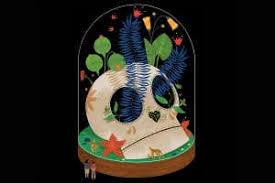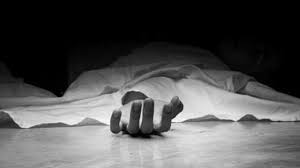The Remains to be Seen
Occasionally there is an event or circumstance in New Orleans that can lead our thoughts and imaginations to very interesting and sometimes even large topics or principles about the humanist experience, and how it meshes with the reality of that circumstance. The existence and revelation and consequent public reaction of the visibility of the remains of a construction worker pinned in the collapsed rubble of the Hard Rock Hotel building site at the corner of Canal and Rampart street in the heart of the city is one of those events.
 There are two bodies still entombed in the wreckage, and the fact that the remains of one of them was always visible, although hard to see, was never to my knowledge publicized, and were screened from view with a fluttering tarpaulin when first discovered as the building and cranes were being secured. Recent strong winds partially unfastened the tarp and exposed the legs of the victim, and the news was out. The words in reaction expressed outrage at the very thought that the city could have permitted this to have happened, and was responsible for seeing that this travesty of decency be remedied, and quickly. On Friday, January 24th, a march from the building site to City Hall was organized to draw attention the whole affair and what seemed a lack of urgency by the city in seeing that action is taken on dealing with the wreckage. The widow of the worker is understandably overcome with grief. They know which of the two bodies buried there is this one.
There are two bodies still entombed in the wreckage, and the fact that the remains of one of them was always visible, although hard to see, was never to my knowledge publicized, and were screened from view with a fluttering tarpaulin when first discovered as the building and cranes were being secured. Recent strong winds partially unfastened the tarp and exposed the legs of the victim, and the news was out. The words in reaction expressed outrage at the very thought that the city could have permitted this to have happened, and was responsible for seeing that this travesty of decency be remedied, and quickly. On Friday, January 24th, a march from the building site to City Hall was organized to draw attention the whole affair and what seemed a lack of urgency by the city in seeing that action is taken on dealing with the wreckage. The widow of the worker is understandably overcome with grief. They know which of the two bodies buried there is this one.
Why though, asks Karl Ove Knausgaard in the first pages of the first volume of his Proust-like 7-volume epic My Struggle, given that we are surrounded daily with “objects in the realm of death” —anything and everything that is non-living material in the world, from doorknobs to suitcases to fields, rocks, the sky—why is there such a distaste for seeing a human being caught up it? Why, as Knausgaard graphically exemplifies, is there such haste to remove from public view the body of a small girl “who ends up under the wheel of a bus…..
Decency? What could be more decent than to allow the girl’s mother and father to see her an hour or two later, lying in the snow at the site of accident , in full view, her crushed head and the rest of her body, her blood-spattered hair and the spotless padded jacket? Visible to the whole world, no secrets, the way she was. But even this one hour in the snow is unthinkable. A town that does not keep its dead out of sight, that leaves people where they died, on highways and byways, in parks and parking lots, is not a town but a hell. (1).
Knausgaard answers this, surmising that we know what death is, but we “don’t want to face it. Hence, the collective act of repression symbolized by the concealment of our dead.”
Martin Hägglund, author of This Life: Secular Faith and Spiritual Freedom, liberally refers to Knausgaard’s materialism, and agrees with this answer. Our human existence is dependent on our bodies, but our bodies are not dependent on us; and the tissues, cells, atoms, and chemical compounds of our material bodies will decompose and take on other forms of earthen material, and are “indifferent to our absence.” There is no transitioning from one life to another, only transformation of matter of our bodies to other forms of matter. This fact, says Hägglund,
Presumably, this is why the dead body is so uncanny and tends to be hidden away. The dead body reminds us that
we are not only in the world but also of the world, made of materials that will degrade and decompose…To see the living body thus reduced to its dead counterpart is to see that nature is indifferent to our interests and desires…(2)
To offset this apparent nihilistic evaluation of human fate—and keep one’s sanity— we can adopt a belief in an afterlife, through religious salvation or natural reincarnation of spirit, which is considerably more pleasant and popular than facing the morbid finality of death. But this is a form of escapism, and should be noted for what it is.

Even if we accept that the sight of a fresh corpse is nothing macabre or to shun or be repulsed by, and its viewing is an acknowledgement and an appreciation of a person’s last moment in life before being frozen in timeless death, we can’t let them lie where they die forever—for obvious reasons. In the case of the stranded, half-crushed body dangling from the Hard Rock site, however, the time for removal must be delayed until it can be safely recovered, in as much wholeness as possible. My humanitarian concern on recovery efforts ends ultimately in the well-being of the living rescuers. Physical law reminds us that you cannot remove a piece from the middle of a house of cards or stack of dominos without causing the rest to crash down for lack of just one supporting piece. The same goes for buildings reduced to heaps of concrete and steel.
At this point, more than three months after the event, that body may well have been the motivation to stir civic-minded locals to question the apparent lack or slow follow up of expediting the cleanup of the site. For the economic leftist, it can be used as a lesson about the hazards of speculative real estate development, venture capital, gentrification, and the corrupt insurance game. For those associated with historical preservation in one of North America’s oldest and most novel cities, it may be a call to advocacy for stronger building codes and diligent enforcement. And for the humanist, stirring a new vitality and direction into all of these interests should act as a reinforcement of her secular faith that there can be purpose and meaning in a material world, and exist even in the material remains of one sole former human. For the distraught relatives of the victims, and especially those of the visibly exposed, we can only hope that in time they will come to recognize there can be positive aftereffects in their loved one’s end—that the deaths have brought some new action from the living; hoping also that they will be materially compensated for those material bodies that will never again be seen as they were at the moment of their deaths.

Reporting forThe Humanist Advocate
Marty Bankson
January 26, 2020
(1) Knausgaard, Karl Ove. My Struggle Book 1. New York: Archipelago Books, 2012
(2) Hägglund, Martin. This Life: Secular Faith and Spiritual Freedom. New York: Pantheon Books, 2019.
